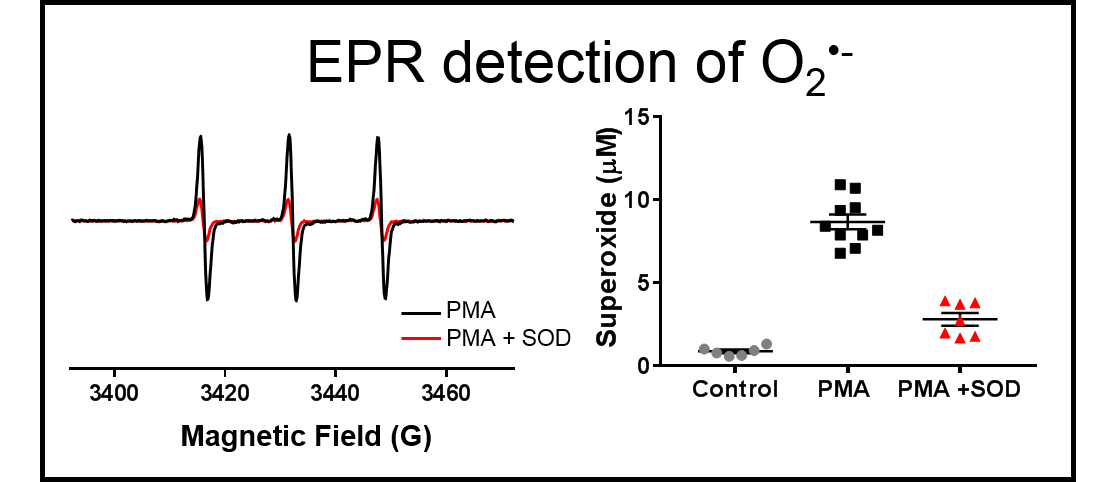Redox Biology
The Redox Biology Unit provides consultation technical support for the study of dysregulated redox regulating signaling in fibrotic diseases.
This unit has established protocols for electron paramagnetic resonance (EPR) spectroscopy, a powerful methodology requiring specialized expertise. EPR spectroscopy is the primary analytical tool in the field of redox signaling and free radical biology, as it is the only method that can measure transient free radical species directly.
The Redox Biology Service Core offers:
1. State of the art measurements for in vitro models or biologic samples (eg: tissue, blood) utilizing novel EPR spin traps and probes to interrogate individual free radical species and cellular redox state in specific cellular compartments (eg: extracellular, cytosolic or mitochondrial).
2. Provide consultation and protocols for other redox methodologies including antioxidant enzyme activites, redox-sensitive targeted expression vectors, or high-throughput assays for ROS production or markers of oxidative stress.
These studies are valuable to the study of fibrosis and can complement other studies including metabolomics and mitochondrial metabolism (Seahorse and Oroboros).
Please contact Eva Grayck for more information. [email protected]
Wound Healing & Tissue Regeneration Core offers:
1. HPLC assay to detect cysteine, cystine, GSH, GSSG and Cys-GSH mixed disulfide.
2. Environmental exposure analysis (e.g. arsenic exposure) in the context of tissue regeneration.
3. Thiol redox signaling, or oxidative eustress in disease pathogenesis.
Please contact James Roede for more information. [email protected]
